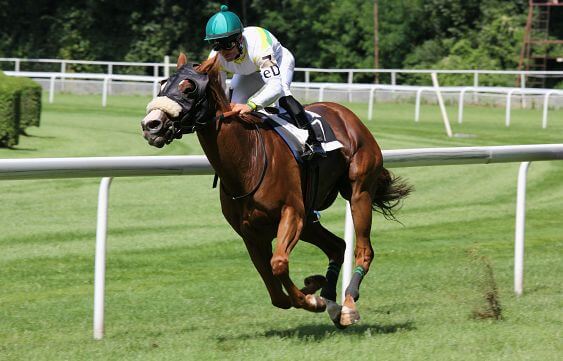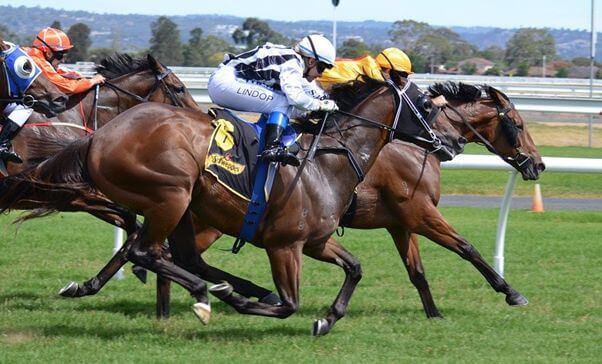[Get Exclusive Tips on our Patreon, Ad-Free]
 Anyone with a passing interest in sports betting will have at least flirted with the idea of placing an accumulator bet. Sometimes called a parlay, the accumulator – or acca – is the bet for the ambitious punters, combining multiple legs for potentially big odds.
Anyone with a passing interest in sports betting will have at least flirted with the idea of placing an accumulator bet. Sometimes called a parlay, the accumulator – or acca – is the bet for the ambitious punters, combining multiple legs for potentially big odds.
Accas are particularly common for betting on team sports. We have all sat back and watch the NFL scores roll in on a Sunday, or the Premier League on a Saturday, knowing that the ebb and flow of the games can lead to glory – or bust town.
The math behind these bets obviously creates conditions where the returns can be huge. In a blog post explaining how to place an acca, MansionBet does a good job of explaining how the math augments both the reward and risk. The post also highlights one of the most famous horse racing accas in history – the seven-timer on Frankie Dettori at Ascot, which came in at over 25,000/1.
But, generally, when it comes to placing an accumulator on horse racing, things can feel a bit more like a lottery. We aren’t talking about a simple win-draw-lose combination – you might have a few dozen runners in a field for a horse race, and that presents a problem for the punter.
Large fields of runners increase the variables
To illustrate what we mean, we need to revert to pure probability and forget about the odds for a moment. If we take a simple four-time accumulator on a baseball game, the ‘true’ odds are technically 15/1. We know this because there is an implied probability of 6.25%, i.e., 16 different possible outcomes for the accumulator. In the real world of betting, each baseball team will have different odds, of course. But in terms of the fundamental math, the 16 different possibilities suggest that the chances of success are 6.25%.
If we apply this same theory to horse racing, then the math can really reduce the probability to a minute number. Let’s say the field for the four horse races in our theoretical acca were: seven runners, 14 runners, 18 runners and 12 runners. There are well over twenty thousand different potential outcomes for the results of those races. And, that leaves the implied probability somewhere in the region of 0.005%.
Of course, the counterclaim to this rudimentary arithmetic is that we know something about the horses before they run. If a Frankel or Secretariat is running in the race, who cares how many horses are in the field? In short, the math above only works when you give each runner an equal chance – and we know that horse racing – and sports betting – does not work like that.

So, what if the answer was to bet on the favorites? We have some data on that from down the years: The favorite tends to win around 30-35% of the time in horse racing. Now, that must be qualified by the fact it changes depending on class of race, type of track, discipline, and so on.
The favorites can’t win all of the time
But, for the sake of argument, let’s say that the favorite wins a third of the time. We can, therefore, apply that to our formula and conclude that a four-timer with the favorites should – theoretically – pay odds of 80/1, as that reflects the implied probability of getting a winning acca for four favorites that have a one in three chance of winning. Would your typical acca on four favorites pay 80/1? The odds would all need to average 2/1 for that to be the case.
Again, these are all rough calculations, but they only serve to illustrate our point. But can we make an assessment as to whether horse racing accas are worth placing or not? It really depends on your view on betting and the ambitions for your bet. Some punters will take inspiration from the fabled Frankie Dettori seven timer at Ascot. But the fact that it took place in 1996, and we are still talking about it, tells you a lot.
Cheltenham acca shows the fine margins
We can leave you with an arguably more interesting example of the realism of horse racing accas. Back at the Cheltenham Festival in 2015, the racing world was buzzing over four horses racing on the opening day: Douvan (Supreme Novices’ Hurdle), Un De Sceaux (Arkle), Faugheen (Champion Hurdle) and Annie Power (Mares’ Hurdle). The quartet, all trained by Willie Mullins and who would have legendary jockey Ruby Walsh in the saddle, were all short-priced favorites for their contests, and the betting public went all-in on four-leg accumulators.
What happened next is now part of horse racing lore. Douvan, Un De Sceaux and Faugheen all triumphed with room to spare, and everything came down to the Mares’ Hurdle. Pre-race, word came out that an Annie Power win would cost the bookies millions (estimates vary, but it is agreed that it was at least £50 million/$70 million).
Annie Power soon took command of the Mares’ Hurdle, with Walsh masterfully guiding her to the front with one fence to jump. And then, disaster struck as Annie Power crashed through the final hurdle, throwing Walsh off in the process. The bookies had snatched victory from the jaws of defeat. If Annie Power had timed her jump a little better – perhaps only waiting for a quarter of a second longer – then victory was assured, and punters would have celebrated one of the most special accas in history. Those are the margins between success and failure in a horse racing acca.
